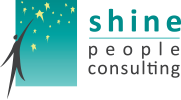In a previous blog The Four I’s of Clarity I mentioned The Three Horizons. Here goes.
When I am coaching Leaders and teams, one of the questions I ask is
‘How much time do you spend on business-as-usual stuff and how much time in future foresight?’
I’m often met with blank stares. Like I’m speaking an alien language. Then the conversation will shift into:
- I don’t know what you mean?
- We get stuff done
They’ve never thought about that question before. It’s not on their radar.
Step in… Bill Sharpe’s Three Horizons
(Check out his book, it’s a great read)
Bill Sharpe, in his book, Three Horizons, The Patterning of Hope, sets out the Three Time Horizons
H1 – Business as usual – how and what we deliver now and in the short term to our stakeholders
H2 – Innovating for Tomorrow – constantly innovating products, services and services and improving relationships and partnerships for the medium to long term
H3 – Future Foresight – what’s coming over the horizon, what’s the changing context? Developing the capacity to play tomorrow’s game.
“The essence of Three Horizons practice is to develop both an individual and a shared awareness of all three horizons, seeing them as perspectives that must all come into the discussion, and to work flexibly with the contributions that each one makes to the continuing process of renewal on which we all depend. We step out of our individual mindset into a shared space of creative possibility. — Bill Sharpe (2013: 29)”
This clicked with me because it means at a practical level that we can incorporate the three perspectives into meetings and conversations from the discussion point of future possibilities.
Bill Sharpe compares the H1 perspective to the Manager who is responsible for keeping the lights on and the business operational without massively disrupting the status quo.
The H2 perspective is the Entrepreneur who sees the advantage of doing things differently, challenging the status quo operationally
The H3 perspective is that of the Visionary who calls for radical transformation towards a better future, strategically, operationally, and culturally.
Here are some questions I picked up from Professor Peter Hawkins. They’re now hard-core questions I put to CEO’s and leaders at all levels
- What % of your work life do you spend on ….
-
- Business as usual
- Innovating for tomorrow
- Future foresight
- What % of your work life do you think you need spend to be ‘future fit’ ….
- Business as usual
- Innovating for tomorrow
- Future Foresight
- What needs to change to shift from A. to B.?
When I put Question 1. to CEOs and their leaders, they often respond 90% in business as usual. Stuck in the day-to-day stuff, down in the trenches (check out my Cult of Busyness post about the lure of business as usual).
Question 2. opens the realisation they need to shift how they work and dramatically if they are to be future fit.
That leads to Question 3. How do we do this? Here’s some reflection questions I ask:
- How important is this work change to your success?
- What is the cost of not doing this?
- What’s the real challenge here for you?
- What will moving forward in this look like for you? What will you see yourself doing differently?
Three Horizons thinking offers a framework of seeing things from different perspectives and contributing to an emergent future. Simply holding a conversation using the framework in any setting has the potential for transformative innovation.
Sign up for our newsletter if you want them to land directly in your inbox.
photo credit: paul skorupskas Unsplash+

Comments (0)